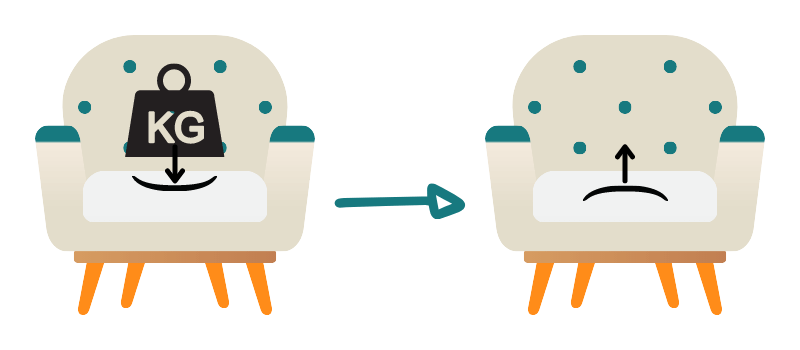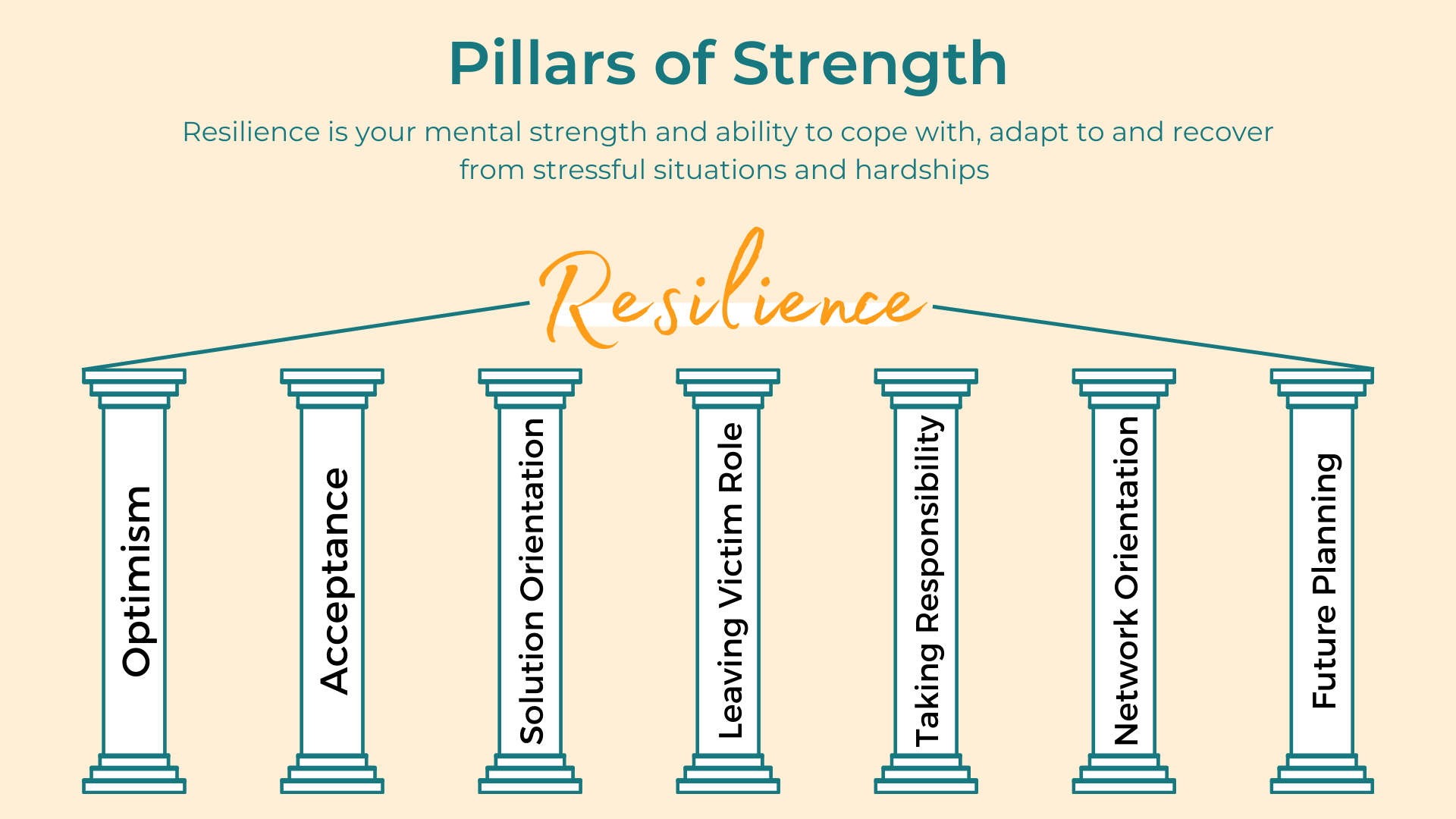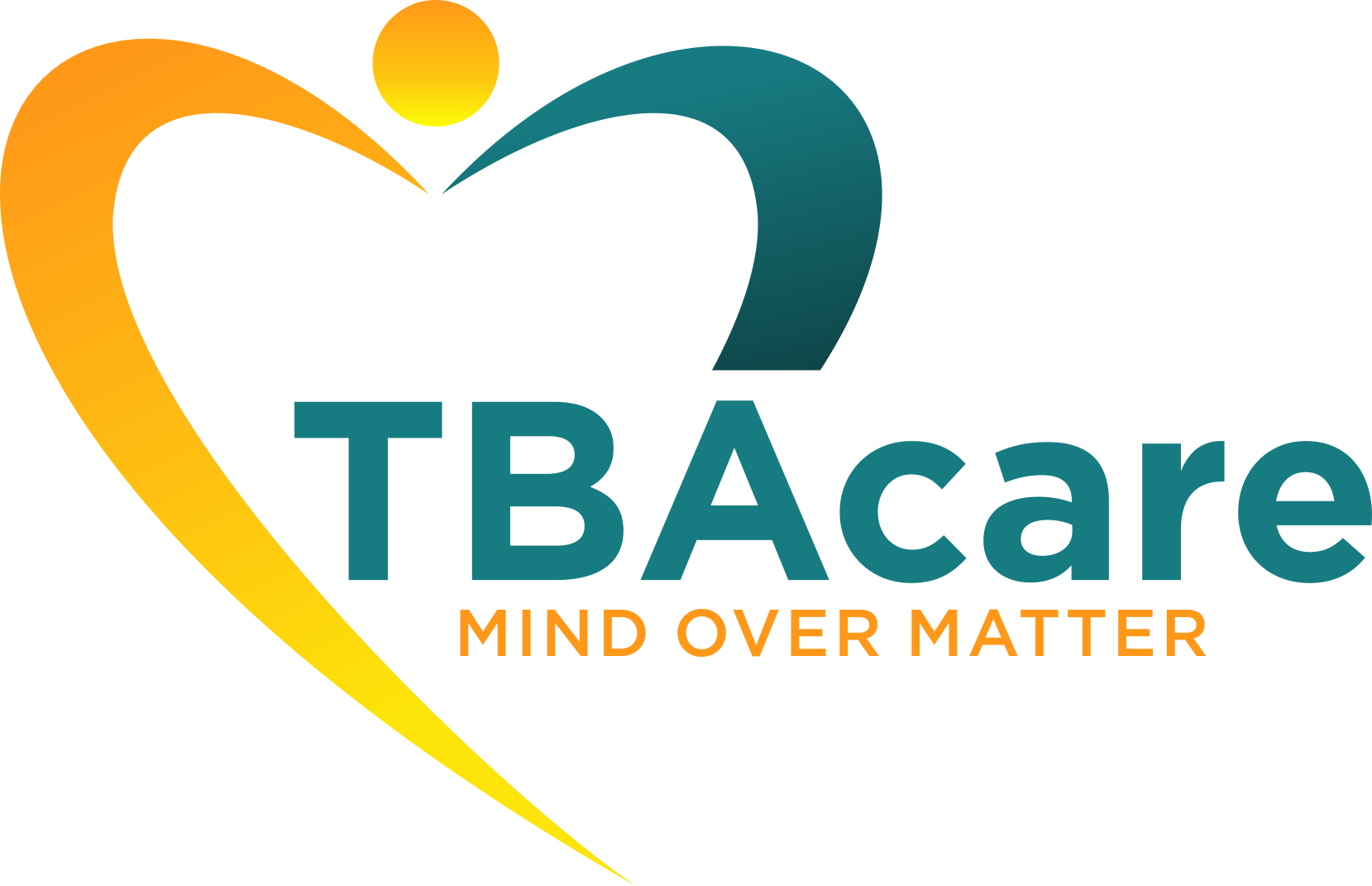Since last year especially, we are frequently coming across words like resilience or mental strength or crisis management on social media and in articles. And it sounds very reasonable and desirable: being resilient, being mentally strong, dealing and coping well with crises… who wouldn’t want that? But how exactly does one get this resilience? And what is it, really?
The saying:

describes it well. Continuing, no matter what. Not losing courage, keep on keeping on in this world… for some this is easier than others.
With cancer diagnoses or other severe crises, it can be hard to get up again and again and keep going forward. This is when a basic level of inner strength is an advantage.
What is resilience?
The results for a google search on the term “resilience” are extensive. There is talk of mental strength, ability to withstand hardship, coping strategies, dealing with stress factors, … Thousands of exercises, tips, definitions, and book, as well as resilience trainers and courses can be found.
In simple terms:
Resilience is the ability to go back to the original state after being exposed to external factors. The term was first used in physics, for example In armchair product testing. The armchair is tested by repeatedly having a weight put on it (simulating a person sitting on the chair) and thus testing the resilience to withstand the impact of this weight and how well it bounces back to or maintains its original form.

Mental resilience therefore is the ability to deal with difficult situations and stress without being impacted severely and for a long time afterwards. It gives the ability to “bounce back” rather quickly and not be worse off afterwards.
How do you become resilient?
There are a couple of different concepts and ideas when it comes to resilience. There’s the 4 Cs (Control, Commitment, Challenge and Connection) and then there are the 5, 6 or 7 pillars of resilience. And these pillars are often defined differently as well.
We work with the following 7 pillars of resilience:

In coaching sessions with cancer patients or their relatives we look at how each of these pillars is faring in their lives. Is the pillar well-developed and stable or could it be built up a bit more?
Here are a couple of ideas for each pillar. Use these as impulses and food for thought for yourself:
Optimism
- Every situation is an experience and thus may be meaningful because there is an opportunity to grow (“who knows what it’s good for”)
- Looking at the positives of a situation (that may be easier if you’ve practiced this before, for example with a gratitude journal)
- The belief in a positive trajectory of everything
Acceptance
- Especially valuable in areas where we don’t have any influence
- Acknowledging and accepting your own feelings towards a situation
Solution orientation
- How you perceive a situation is up to you! Are you going on and on about the problems and negative aspects of a situation or are you actively seeking solutions?
- Try to find (new?) ways of dealing with it – being creative in that aspect
Leaving the victim role
- Changing from passively suffering or bearing something to actively taking part in it
- Doing something, becoming active
Taking responsibility
- If you’re leaving the role of the victim behind it is easier to assume responsibility for everything you’re doing and not doing
- Not blaming everything on someone else or the circumstances
Network orientation
- Building up a social support system
- Asking for and accepting help (being vulnerable)
- “Teamwork makes the dream work”
Future Planning
- Having goals and a vision gives you something to work for
- Finding meaning in your life (small or big)
- Helps to motivate and discipline yourself because you know your Why
Your turn
Now it’s your turn with this little exercise:
Take a piece of paper and think about your resilience in general and how these pillars look for you specifically. Put down a number from 0-10 (0=not well-developed; 10=very strong pillar) for each pillar and take notes why that might be. Analyze the situation and then see if you can find ways to change it (if you want to change it). How could you strengthen each pillar to overall becoming more resilient?
If it makes it easier, find someone to talk this through with – it could be a trusted friend, family member or a life/cancer coach.
The most important aspect of all exercises is taking action. And that’s often the missing step for actual change. When you have found something that you could do to build up a pillar (say, you want to start trying to ask for help within your social network or reconnecting to old friends and put down a first step of sending a text to someone, then actually do it.)
We would encourage you to set small goals, tiny habits or easy first steps and then building on that foundation, step by step, brick by brick, to build up your pillars of resilience.
Your TBAcare Team
![]()
